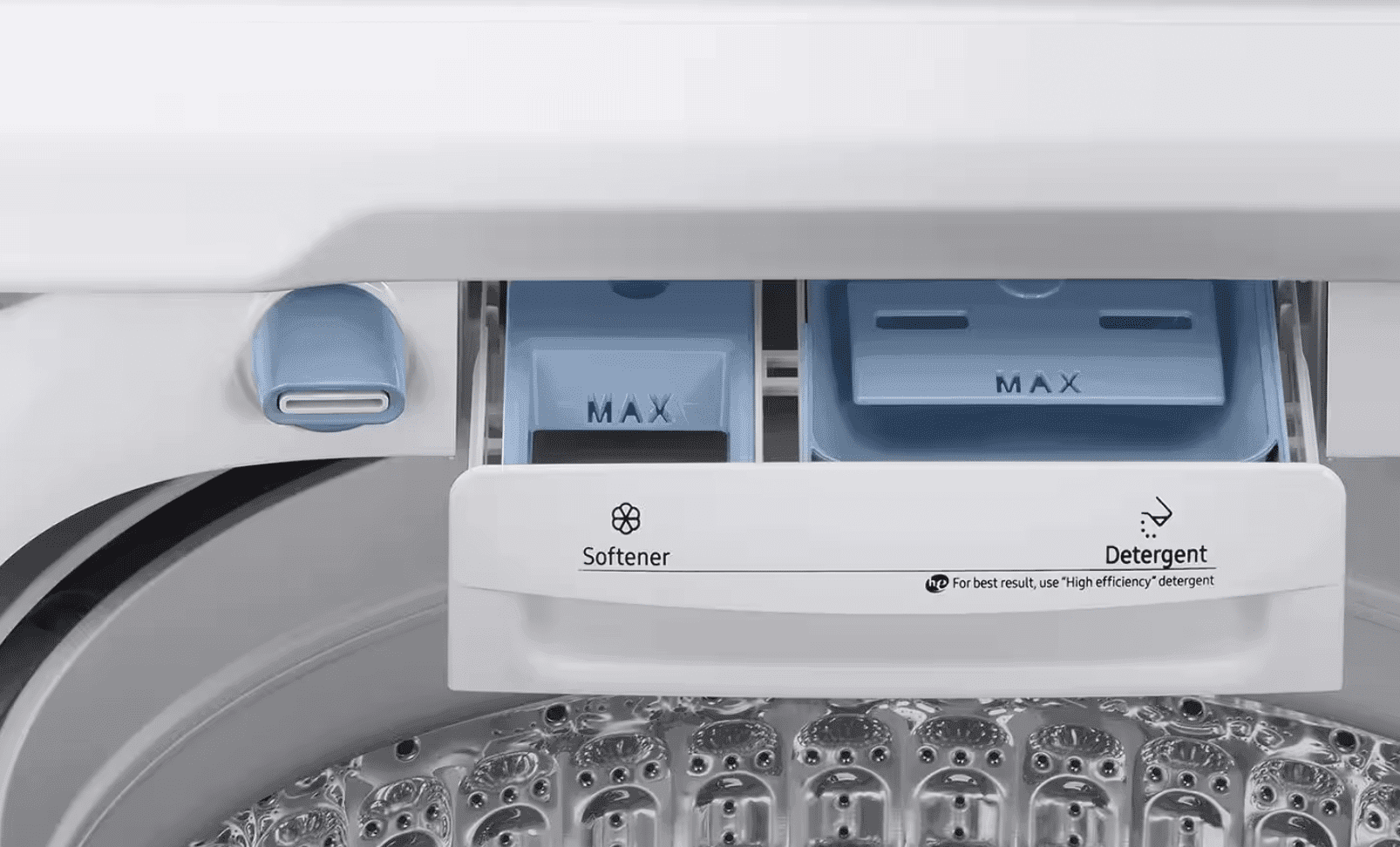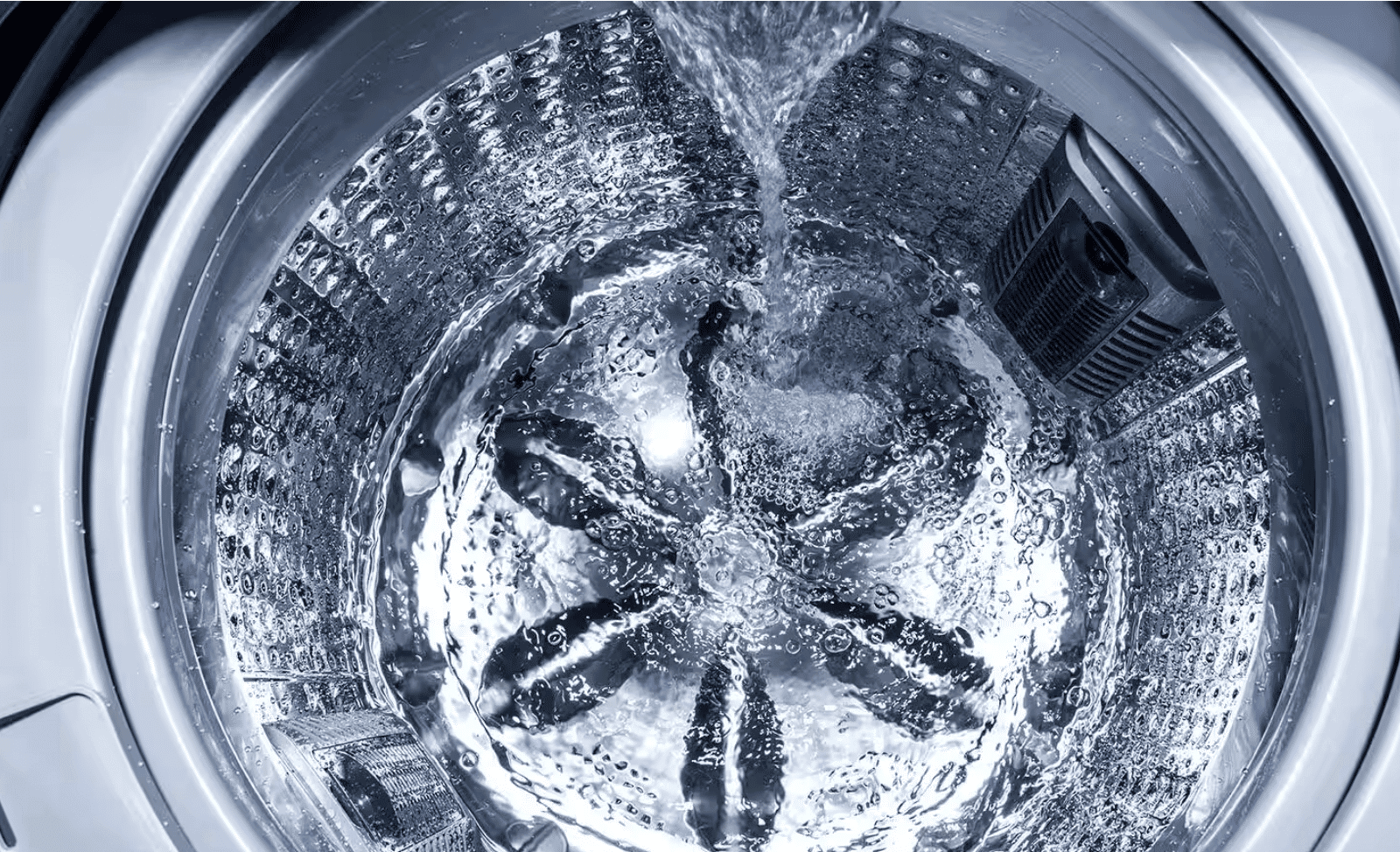Is your washing machine not performing as well as it used to? You’re not alone. Many homeowners struggle with machine issues that could be prevented with proper care.
The good news is that maintaining your washing machine doesn’t have to be complicated or time-consuming.
With the right know-how, you can keep your appliance running smoothly for years to come.
In this guide, we’ll walk you through 15 practical maintenance tips to keep your washing machine in top shape.
From simple cleaning routines to smart usage habits, these tips will help extend your machine’s life, improve efficiency, and save you money on repairs and replacements.
Step-by-Step Guide to Cleaning Washing Machine at Home
Step 1: Clean the Washer Tub
Run an Empty Hot Cycle with Vinegar
- Set your washing machine to the hottest, longest cycle.
- As the drum fills with water, add 3-4 cups of white vinegar directly into the drum.
- Allow the washer to agitate for a few minutes, then pause the cycle.
- Let the vinegar sit in the drum for 30 minutes to 1 hour to help dissolve detergent residue and remove odors.
Add Baking Soda
- After the soaking period, add 1/2 cup of baking soda to the drum.
- Let the machine complete the cycle, allowing the vinegar and baking soda to clean the washer thoroughly.
Step 2: Clean the Detergent Dispenser and Removable Parts
Remove and Soak the Dispensers
- Take out the detergent, bleach, and fabric softener dispensers (if removable).
- Soak them in a basin of hot water with a few tablespoons of vinegar for 30 minutes to loosen grime.
Scrub with an Old Toothbrush
- Use an old toothbrush or small cleaning brush to scrub away any detergent or mold buildup.
- Rinse the dispensers thoroughly and wipe them dry with a microfiber cloth.
Step 3: Clean the Door or Lid and Rubber Seals

Clean the Rubber Seals
- For front-load machines, focus on the rubber gasket around the door.
- Mix equal parts of water and vinegar in a spray bottle.
- Spray the rubber seals and wipe them down with a sponge or microfiber cloth to remove any trapped dirt, mold, or mildew.
Top-Load Washer Lid
- Clean the inside of the lid and the lip around the top of the drum.
- Wipe away soap scum, lint, and any detergent buildup.
Step 4: Clean the Washing Machine Drum with Bleach or Peroxide (Optional)
Bleach for Deep Cleaning
- If there’s a lot of bacteria or unpleasant odors, fill the detergent drawer with 1/2 cup of bleach and run an empty cycle on the hottest setting.
- Do not use vinegar or any other cleaners when using bleach.
Hydrogen Peroxide Alternative
- For a chemical-free option, use 2 cups of hydrogen peroxide instead of bleach.
- Run an empty hot cycle to naturally disinfect the machine.
Top Tips for Maintaining Your Washing Machine
1. Use the Correct Detergent
Use “HE” detergents for high-efficiency washers and regular detergents for standard machines. Always check your washer’s manual for specific recommendations.
Using the right detergent prevents residue buildup and keeps your machine running smoothly.
2. Avoid Using Too Much Detergent
Excess detergent leaves residue on clothes and inside the machine, reducing cleaning efficiency. Follow the package instructions for the correct amount.
If you have soft water, you might need even less.
3. Don’t Overload the Machine
Overloading strains the motor and results in poor cleaning. Fill your washer about 3/4 full for most loads and 1/2 full for heavy items like towels or jeans.
This ensures better cleaning and less wear on your machine.
4. Clean the Lint Filter Regularly
A clogged lint filter causes odors and reduces efficiency. Find your filter’s location in the manual, then clean it monthly. Remove lint and debris, and rinse with warm water.
5. Leave the Door Open After Each Use
Leaving the door open after washing allows air circulation, preventing mold and mildew growth. For front-load washers, also wipe down the rubber seal around the door.
6. Check and Replace Water Hoses
Inspect hoses regularly for wear and replace them every 3-5 years, even if they look fine. Consider using braided stainless steel hoses for extra durability.
7. Level Your Washing Machine
An unbalanced machine can damage floors and itself. Use a bubble level to check, and adjust the legs if needed. A level machine runs more quietly, efficiently, and lasts longer.
8. Use Drip Pans to Prevent Water Damage
Install a drip pan under your washing machine to catch small leaks. This simple step can protect your floors from water damage, especially if your washer is on an upper floor or in a finished basement.
Choose a pan slightly larger than your washer’s base for the best protection.
9. Check for Leaks and Loose Fittings
Monthly, inspect all visible hoses, seals, and connections for wear or leaks. Pay attention to hose connections at the back and the door seal.
Tighten loose fittings and replace worn parts promptly. Regular checks can prevent water damage and costly repairs.
10. Wipe Down Exterior Surfaces Regularly
Clean your washer’s exterior weekly with a damp cloth. For tough grime, use mild soap. Include controls and dispensers in your cleaning routine.
This helps maintain smooth operation and alert you to issues like leaks or rust.
11. Repair Damages Promptly
Don’t ignore unusual noises, vibrations, or performance changes. These could signal problems that may worsen if left unchecked. Fix any leaks immediately, no matter how small.
Quick repairs can extend your machine’s life and save money on major fixes later.
12. Use Warm or Cold Water
Opt for warm or cold water for most loads. It’s gentler on your machine, saves energy, and is often sufficient for cleaning. Reserve hot water for heavily soiled items or tough stains.
13. Descale the Machine
If you have hard water, descale your washer every few months. Run an empty cycle with white vinegar or a descaling product to remove mineral build-up and maintain efficiency.
14. Clean the Detergent Drawer
Remove and rinse detergent and fabric softener drawers monthly. Use warm water and a brush to clear residue. This prevents clogs and ensures proper dispensing during washes.
15. Use Mesh Bags for Delicate Items
Protect delicate clothes and reduce lint by using mesh laundry bags. These are great for items with hooks and help contain lint from towels or other lint-producing items.
Conclusion
By incorporating these maintenance tips into your routine, you’re not just caring for a machine – you’re investing in cleaner clothes, lower utility bills, and a more eco-friendly home.
Remember, a well-maintained washing machine isn’t just about preventing breakdowns; it’s about optimizing performance and extending the appliance’s lifespan.
Start small by implementing one or two tips this week. As you see the benefits, add more to your routine.
You might be surprised at how these simple actions can make a big difference.
Ultimately, the goal is to make these practices second nature.
With consistent care, your washing machine will serve you well for years to come, saving you time, money, and hassle in the long run.












